Elopomorpha
The members of this group all have a larva known as a leptocephalus. This larval form is transparent and leaf-shaped, looking similar for all species, even though they may look completely different as adults.
Elopiformes: Tenpounders
These fishes are slender and silvery, with a forked caudal fin and a gular plate under their lower jaw. These fish also have an adipose eyelid (cool). These fish are very bony and do not make good food, but are often fished for sport.
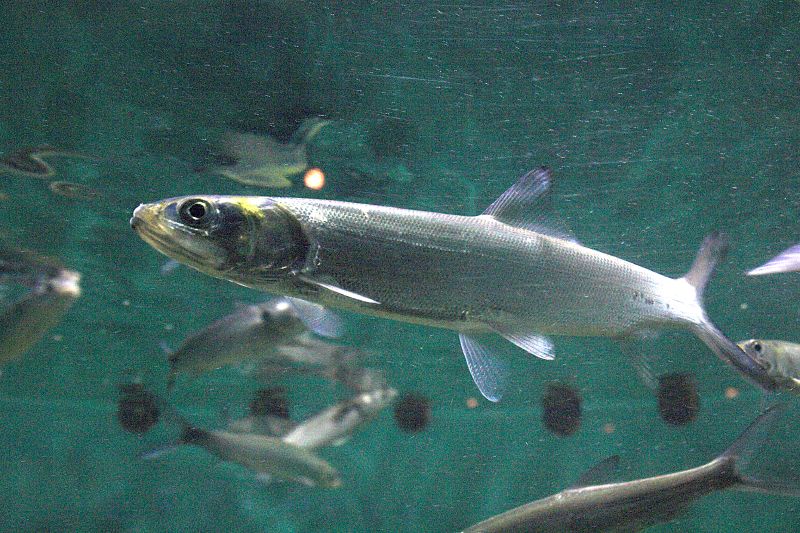
Elopidae: Tenpounders, Ladyfishes
There is only one family (Elops). These fishes as described above (not exciting).
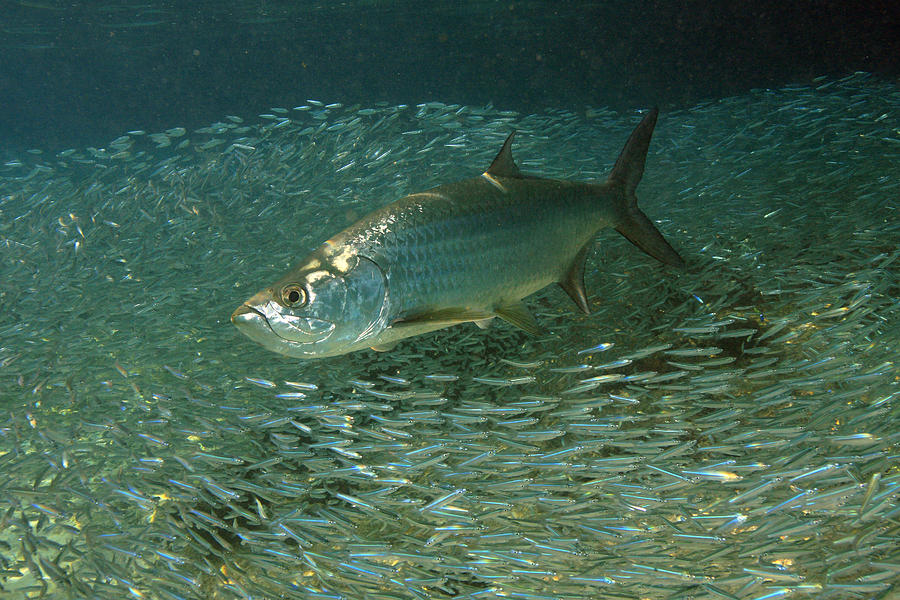
Megalopidae: Tarpons
There is only one genus (Megalops). These fish grow relatively large, and are extremely recognizable by their silvery scales and their upturned mouth. The tarpon uses its swim bladder for respiration while swimming in low-oxygen waters.
Albuliformes: Bonefishes
Nelson says, "Mandibular sensory canal lying in an open groove in the dentary and angular bones." Let's pretend that's super interesting and move on, shall we?
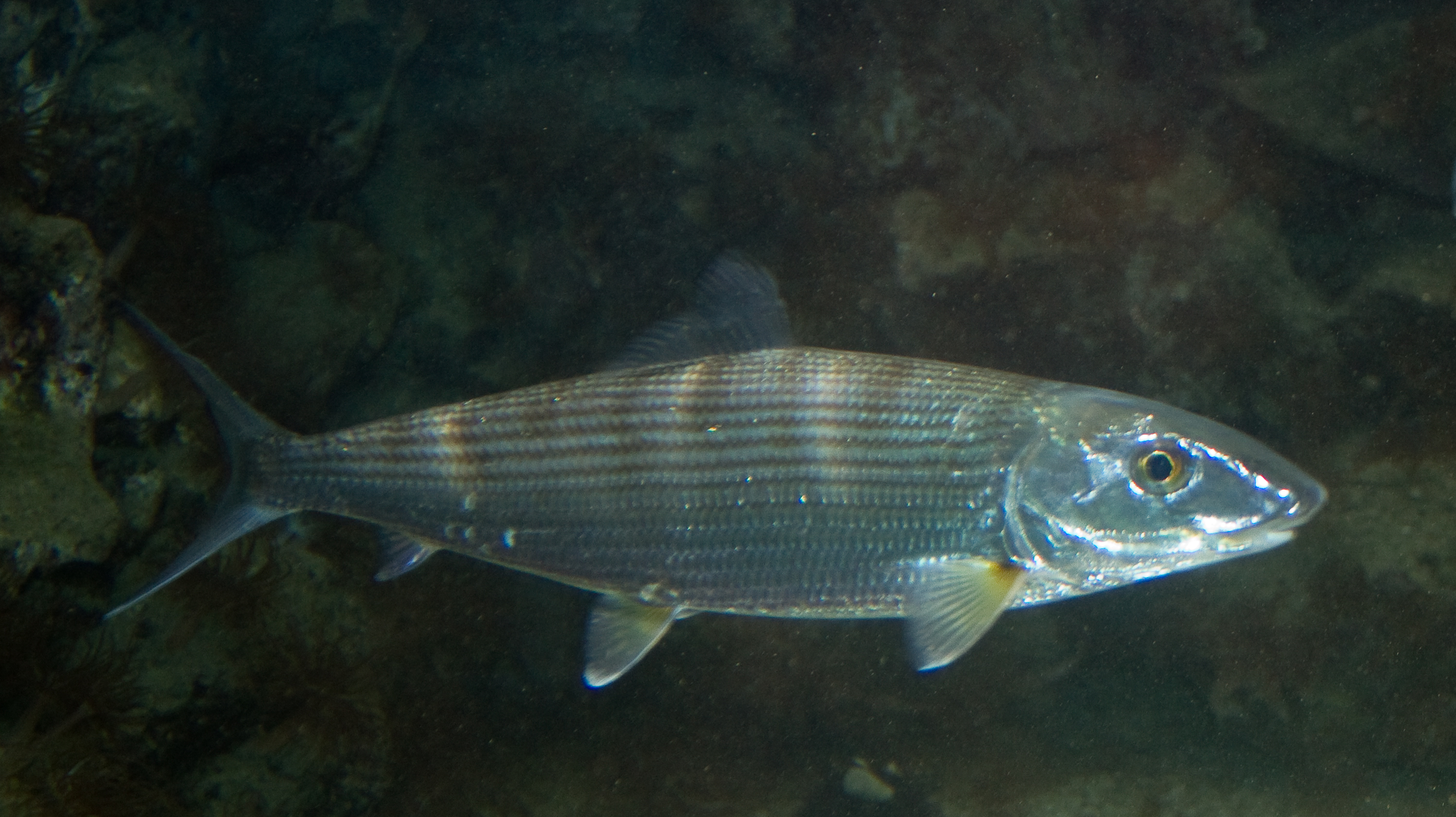
Albuloidei
There is only one family (Albulidae). They are similar to Elopiformes, but do not have the familiar mouth at the end of the body. The genus Albula has a pointed snout, but the genus Pterothrissus does not.
Notacanthoidei
These fishes lack a caudal fin, and are much more eel-like than the bonefishes. According to Nelson, the tail can be regenerated if lost.

Halosauridae: Halosaurs
Though lacking a caudal fin, the anal fin traverses much of the length of the body. The upper jaw is longer than the lower jaw, giving the head a pointed look.
Notacanthidae: Spiny Eels
The notocanthids have a much more rounded head compared to the pointed body of the halosaurs. They also have an elongated anal fin.
Anguilliformes: Eels
The true eels lack pelvic fins, and some also lack pectoral fins. The anal and dorsal fins are fused to the caudal fin, creating one large fin that is attached both dorsally and ventrally.
Anguilloidei
Why are you reading this? Go to the next section!
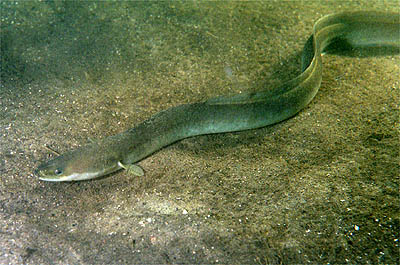
Anguillidae: Freshwater Eels
These eels are different than most other migrating fishes (and eels), because they spend their adult lives in freshwater and travel to saltwater to spawn. Two species, Anguilla anguilla and Anguilla rostrata are often used for scientific studies, and are also a well-used source of food.
Heterenchelyidae: Mud Eels
These eels like to burrow...in mud, no less. They also have large mouths.

Moringuidae: Spaghetti Eels
As Nelson states it, this family has "feeble" pectoral fins (sad). The eyes are not necessary for their burrowing lifestyle, and are covered with skin. Their skinny, cylindrical appearance gives them their common name.
Muraenoidei
Nope, just keep moving...
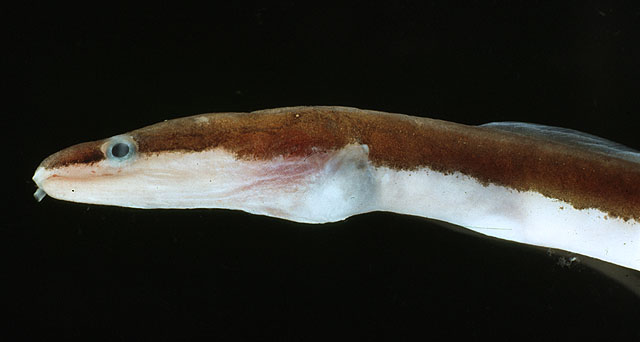
Chlopsidae: False Morays
It may look like a moray eel...but it is not. Because it is a false moray. Got it? Moving on then...
Myrocongridae: Myroconger Eels
There is only one genus, Myroconger. Not much is known about this family. Sorry.
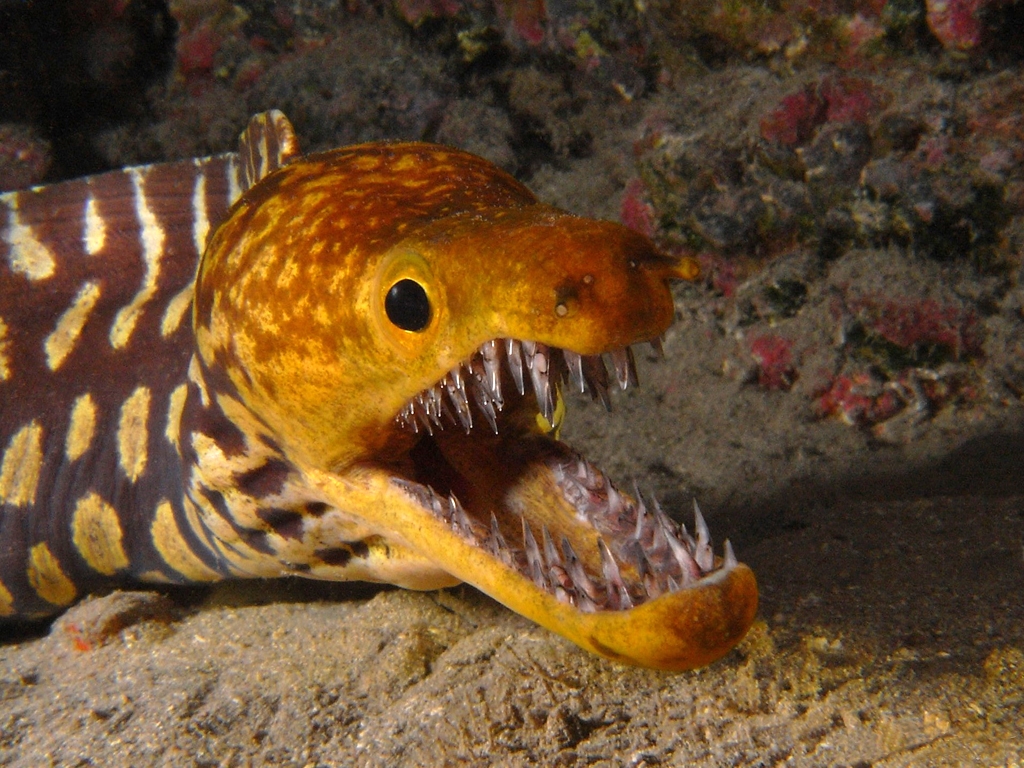

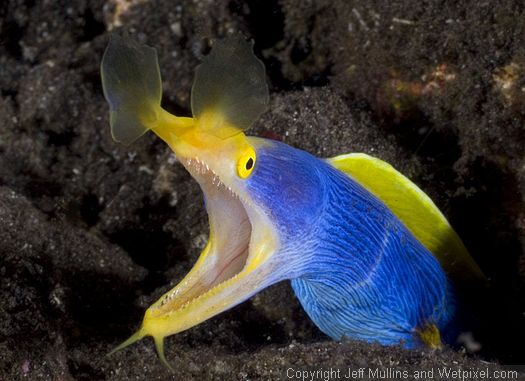
Muraenidae: Moray Eels
Who doesn't think morays are cool? This family is the only group to actively use its pharyngeal jaws for feeding. In most fish, they are only modified gill arches, but in the moray they are quite mobile. This most likely evolved because the moray's head is too narrow to feed using suction. Instead, it grasps prey with its jaws, then protrudes the pharyngeal jaws enough to grasp the prey and drag it back into the mouth, towards the esophagus. How cool is that? Morays do not have great eyesight, and instead use their sense of smell to find their prey. They produce a thick coat of mucus which protects them from predators. The green moray (Gymnothorax funebris)is actually blue with yellow mucus! A couple interesting species:
- Fangtooth Moray (Enchelycore anatina): This moray is unbelievably creepy, as it has giant glassy fangs...super creepy
- Giant Moray (Gymnothorax javanicus): The largest by weight, it is the only fish that engages in cooperative hunting with another species of fish (roving coralgrouper)
- Ribbon Moray (Rhinomuraena quaesita): This moray is extremely recognizable for its bright blue coloration, bright yellow head, and large expanded nostrils
- Slender Giant Moray (Strophidon sathete): The longest species of moray, can reach up to four meters
Congroidei
Yeah...I've got nothing.
Synaphobranchidae: Cutthroat Eels
The leptocephalus larvae are unique in that they have telescoping eyes, which jut from the head. One species, Dysommina rugosa, has been found in a large colony near a volcano in the American Samoa, and has been aptly nicknamed "Eel City." Another species, Simenchelys parasitica, is known to burrow into the flesh of dying fishes and feed upon the blood.
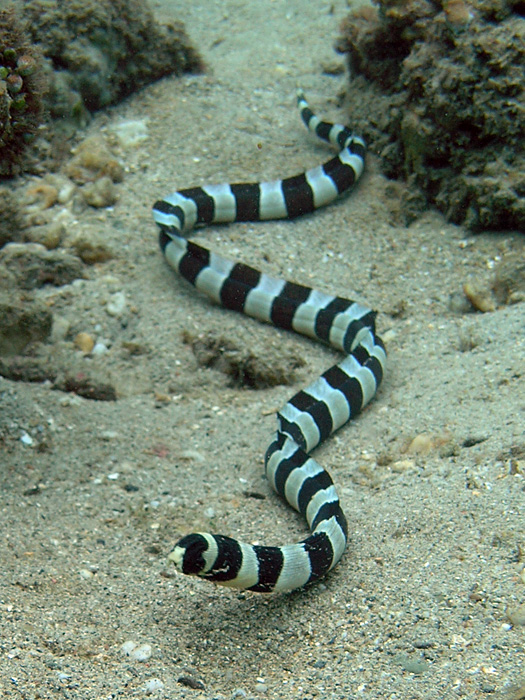
Ophichthidae: Snake Eels, Worm Eels
These eels are long and skinny, and can burrow into the soil like worms. They have lost all of their fins, making them even more worm-like. Many of these eels have striped colorations to mimic the design of venomous sea snakes. There are loads of species, and they are all quite similar with wide distributions.
Colocongridae: Shorttail Eels
There is only one genus (Coloconger). They have the most blunt head out of all the eels. And that is all.
Derichthyidae: Longneck Eels
There is a series of parallel stripes on the head, which form a "sensory system." What this system senses, I don't know. We'll go with "things." One species has a longneck, and the other two have duckbills. Fascinating!
Muraenesocidae: Pike Congers
The pike congers have well-developed pectoral fins and teeth, but their eyes are covered with skin.
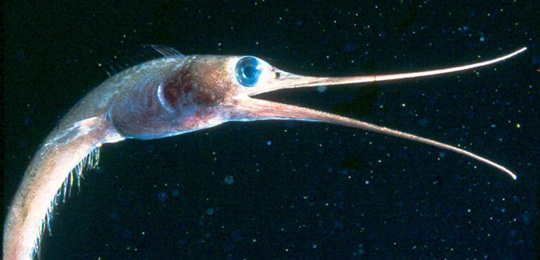
Nemichthyidae: Snipe Eels
These eels have interesting jaws, with the upper jaw curving upwards away from the lower jaw. They have large eyes, and their anus has migrated to be located at the throat!
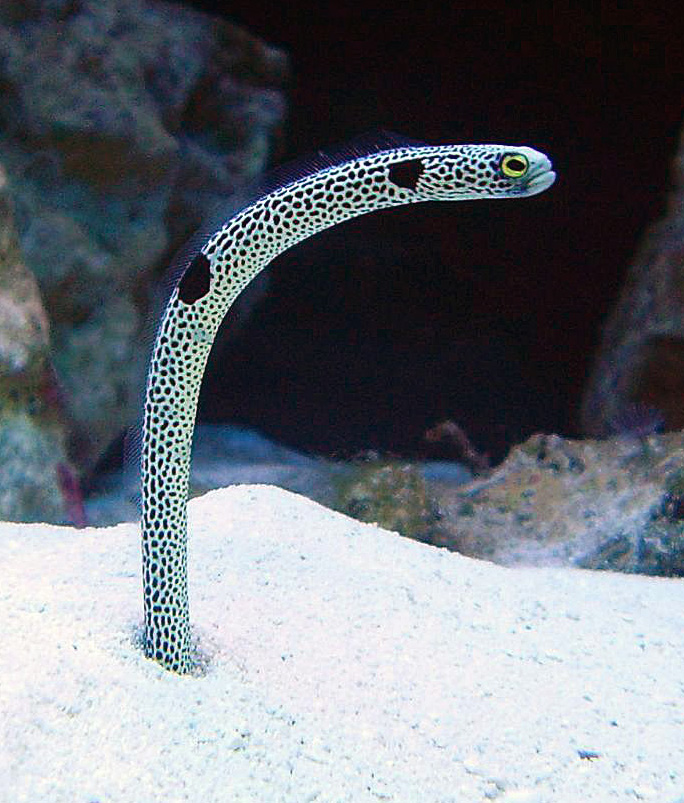
Congridae: Conger Eels
One of the largest families, it contains many species that are quite similar to each other, having not too many exciting features. However, this family includes the subfamily Heterocongrinae, which is made up of the garden eels. These eels live in a burrow on the seafloor, and stick their head out looking for food to pass by. If a predator comes near, they will slowly lower themselves into their burrows until danger passes.
Nettastomatidae: Duckbill Eels
These eels are recognized by their duckbill-shaped jaws. That's fun, isn't it?
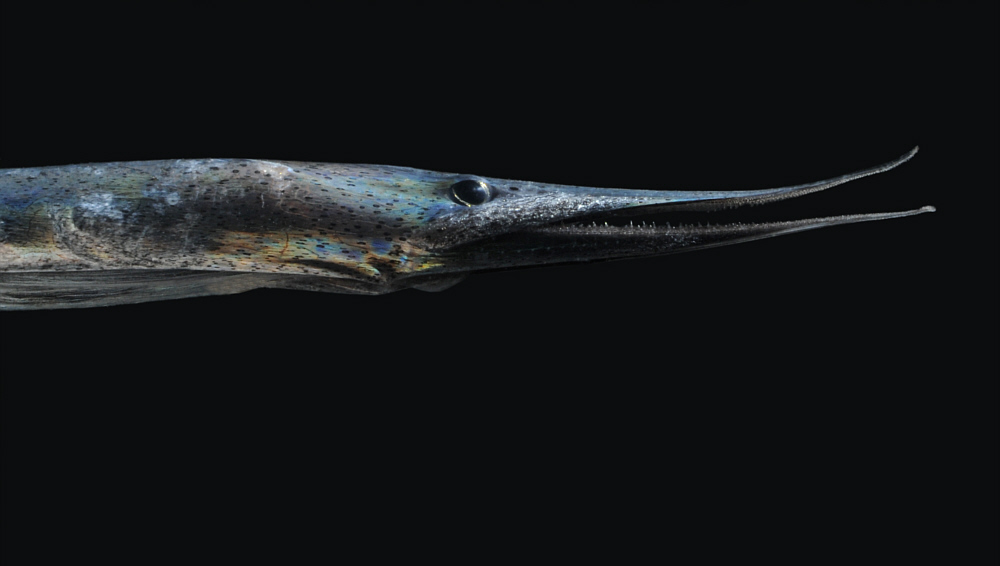
Serrivomeridae: Sawtooth Eels
These eels get their name from the presence of inwardly-slanting teeth on the vomer bone.
Saccopharyngiformes: Sackpharynx Eels
This group may look superficially like eels, but they have many differences. There are many differences in skeletal structure (which I won't discuss here), plus the loss of pelvic fins and a swim bladder. The mouth is extremely large, and these deep-sea eels are known for swallowing prey much larger than themselves.
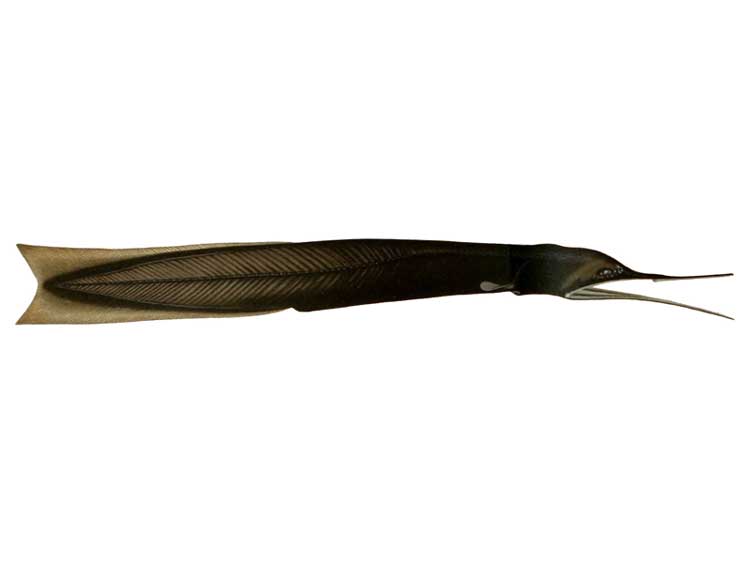
Cyematoidei
There is only one family (Cyematidae). They are characterized by an arrow-shaped body, and most unusual for eels, a forked caudal fin.
Saccopharyngoidei
These are considered the most highly modified of all vertebrates, with many interesting features, including a highly distendible pharynx for swallowing large prey.
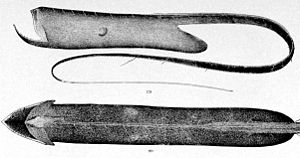
Saccopharyngidae: Swallowers
There is only one genus (Saccopharynx). They have a much longer body than other members of the suborder, and have curved teeth to capture prey. The long tail has many modifications in shape and size, and produces a pink glow with red flashes. It is most likely used as a lure, but that would require the eel to hold its lure in front of its head.
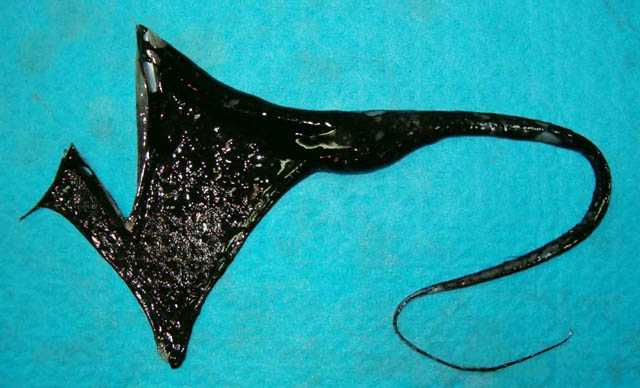
By Ángeles Armesto ([1]) [CC BY 3.0], via Wikimedia Commons
Eurypharyngidae: Gulpers, Pelican Eels
There is only one species, Eurypharynx pelecanoides. This eel gets its name from its expandable lower jaw, which is like a pelican's pouch. The lateral line is not protected in this species, instead projecting from the skin to increase sensitivity.
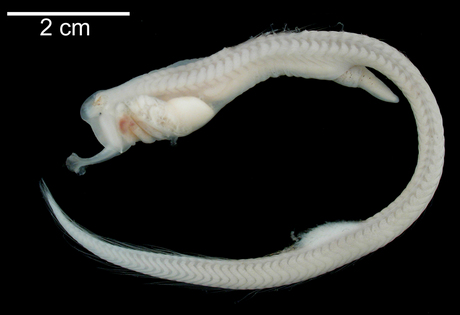
Monognathidae: Onejaw Gulpers
There is only one genus (Monognathus). This genus is unique because the maxilla and premaxilla are absent...the fish literally has no upper jaw. According to Nelson, they have a rostral fang...with a connected gland!